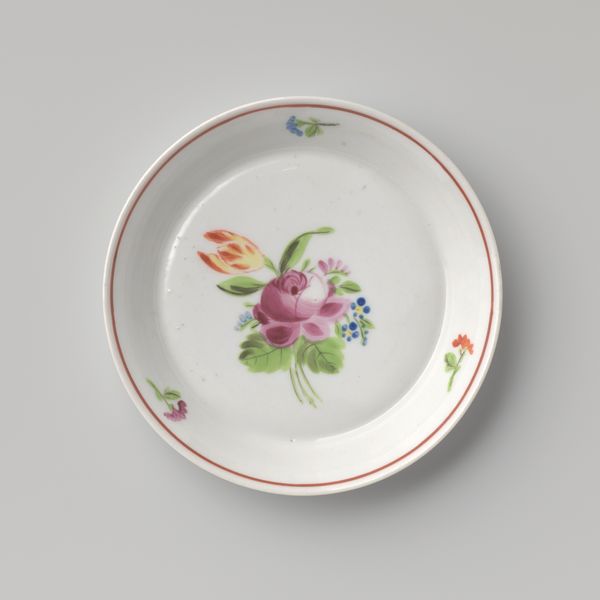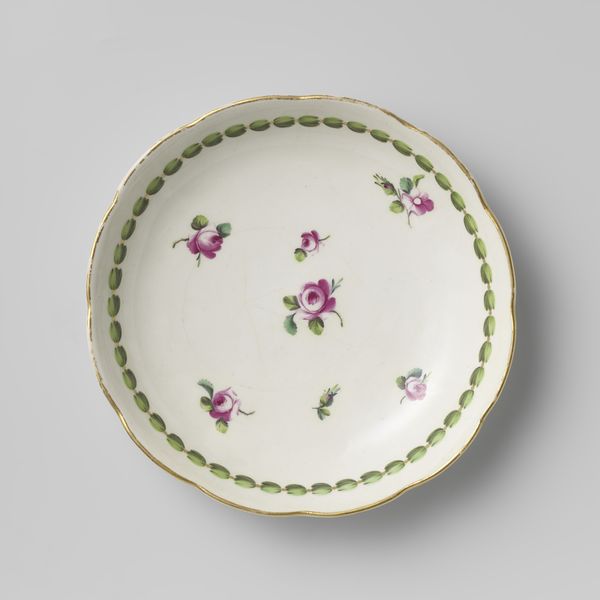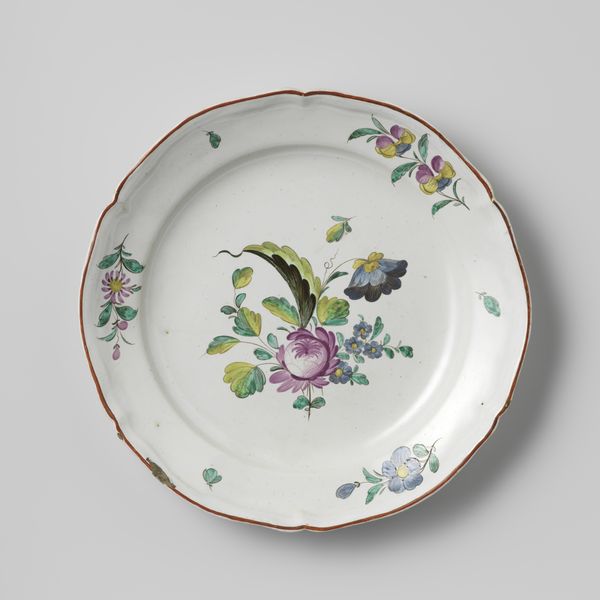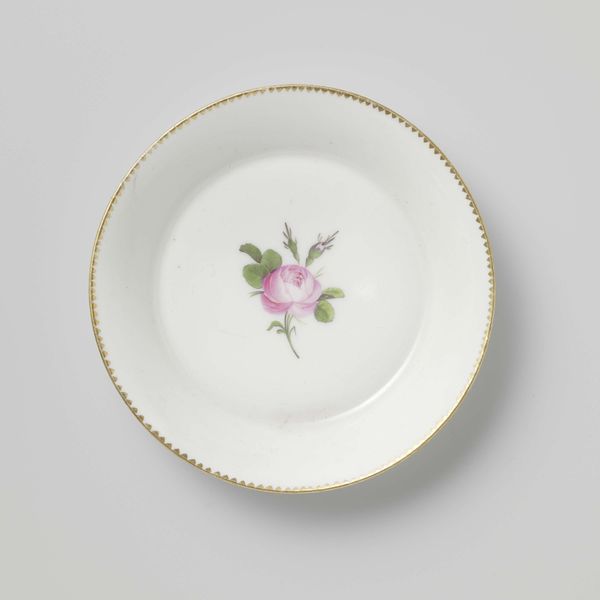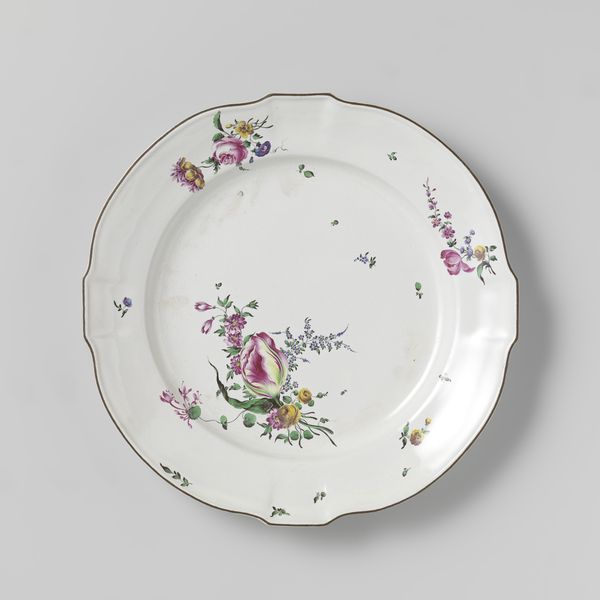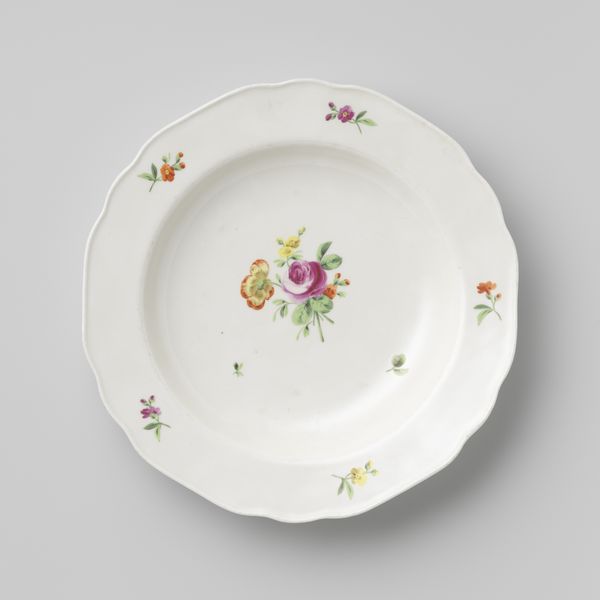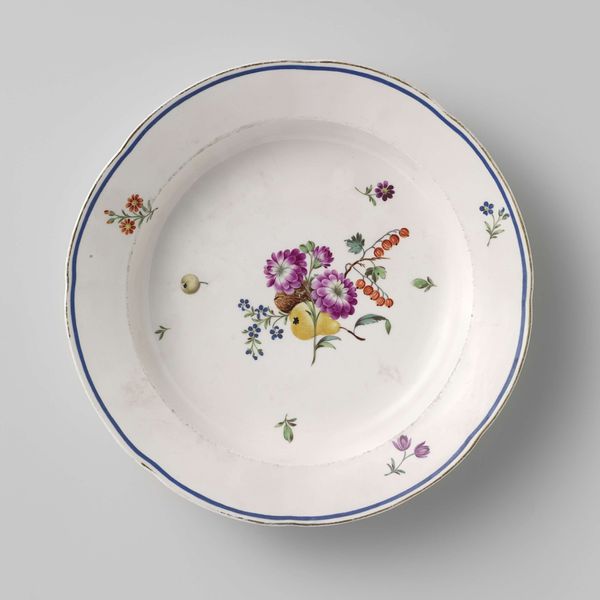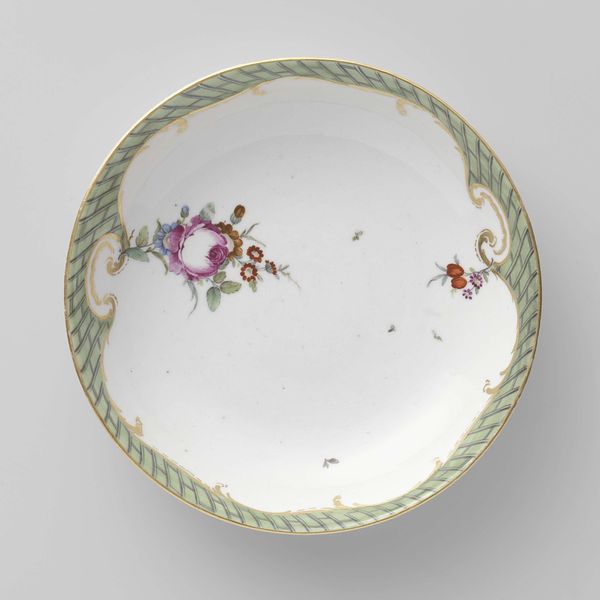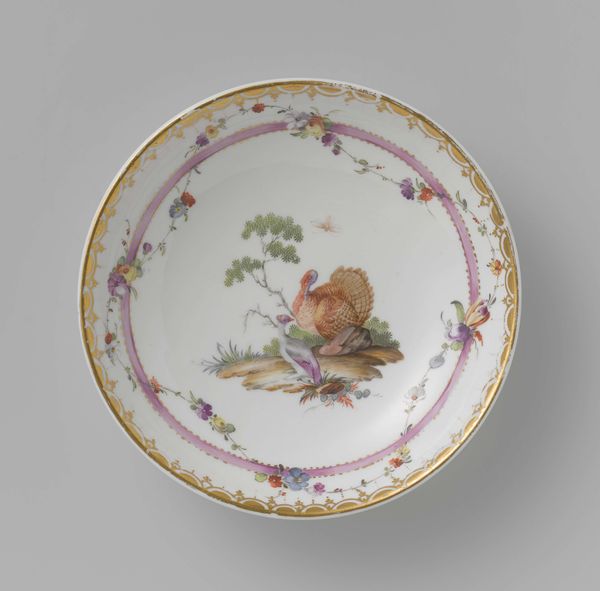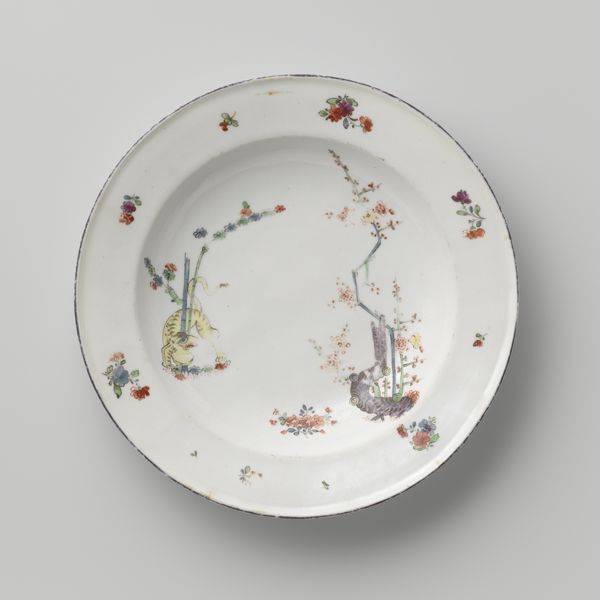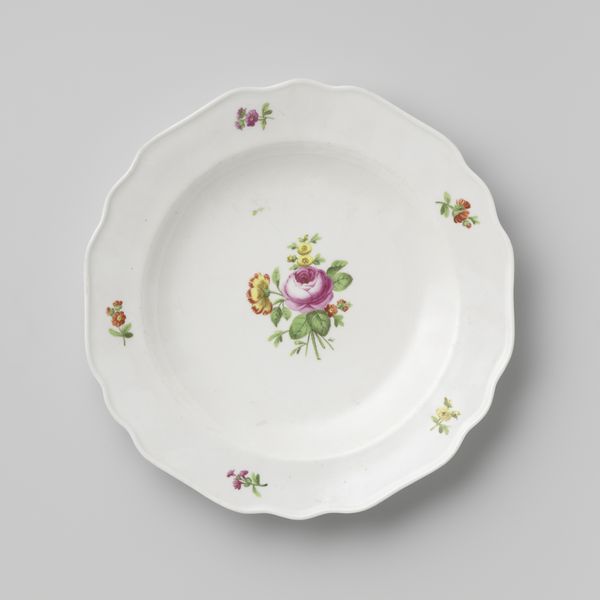
Schotel, beschilderd met groenten en vruchten omgeven door strooibloemen c. 1777 - 1790
0:00
0:00
Dimensions: height 3.2 cm, diameter 13.3 cm
Copyright: Rijks Museum: Open Domain
Editor: This is a porcelain plate painted around 1777-1790 by the Porseleinfabriek Den Haag. I notice how delicately the fruits and vegetables are rendered. What symbolism do you see in the composition? Curator: This Rococo plate speaks of bounty and nature's gentle touch. Vegetables and fruit, seemingly random, are anything but. Consider the turnip, the onion, the walnut. These weren't just foods; they represented the earth's gifts, prosperity, and even, subtly, the cycles of life. Do you notice the small sprigs of flowers? Editor: Yes, scattered around the edges. Curator: These little floral additions around the main images add an important layer. While the central grouping suggests grounded abundance, those flowers speak to beauty, fleeting moments, and a certain refinement cherished during the Rococo period. They add levity, preventing the image from feeling too utilitarian. It is all designed for enjoyment of life's bounty in beautiful balance. How does the asymmetry impact you? Editor: I hadn’t thought of the asymmetry that way. It feels playful and less rigid. Curator: Precisely. The asymmetry combined with these natural images keeps things from becoming overly formal or stiff, things highly valued during this era. It embodies Rococo's essence: beauty intertwined with everyday pleasures. Even dining becomes an act of engaging with visual symbolism. Editor: It is like enjoying your daily meal while celebrating the earth. Thanks, it feels less simple and more meaningful now. Curator: My pleasure. Food sustains life; imagery, culture!
Comments
No comments
Be the first to comment and join the conversation on the ultimate creative platform.


